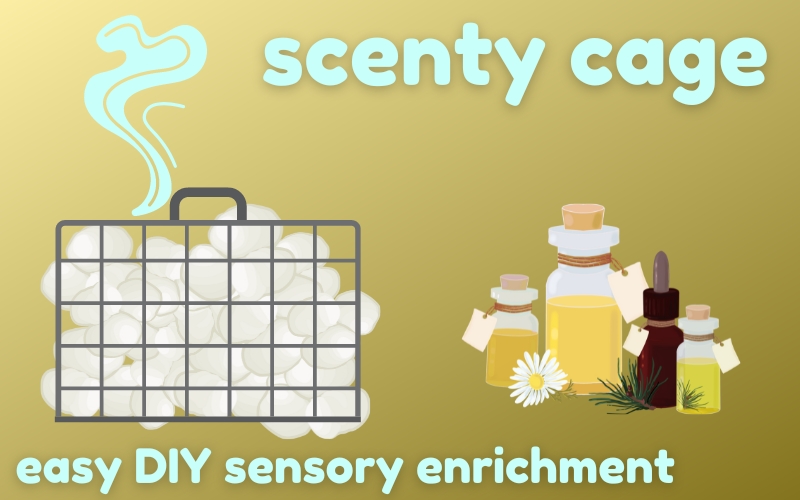
Scent enrichment is an overlooked but useful sensory enrichment option for horses. All horses appreciate scent enrichment, but stalled horses especially need additional stimulation to keep stress at bay during confinement. This easy DIY scent cage attaches to the outside of the stall. Fill it with scented material for an easy addition to your boredom relief toolkit. Here’s how to make it, step by step.
Quick update: if you enjoy this enrichment inspiration, would you consider supporting this blog on Patreon? My presence there is brand new but I’m filling it up fast with downloadable enrichment content. You don’t have to support to view/download, but it would be super appreciated!
What is the DIY Scent Cage?
This easy stall enrichment hack is a suet cage, made for birdfeeding, attached to the outside of your horse’s stall. When it’s filled with scented material, your horse can sniff the enrichment whenever they like but can’t chew or push on the item.
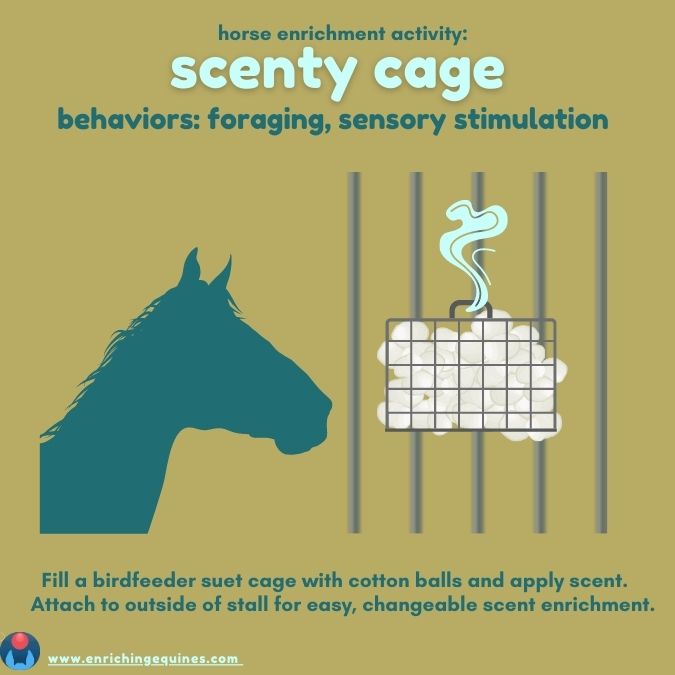
The DIY scent cage for equine enrichment works with any scent, and cotton balls or folded fabric make a great scent carrier.
Why Scent Enrichment?
Scent enrichment for horses is an important form of sensory enrichment. Sensory enrichment for horses and other equines is designed to target any of your horse’s senses, providing stimulation and novelty that their environment would otherwise lack.
Horses have a great sense of smell, and the equine brain is designed to experience and process all kinds of scents, all the time. But let’s be honest – stalls are boring places most of the time, and there’s very little day to day sensory variety unless we take the time to provide it.
An enriched stall that includes regular, varied scent enrichment can help your horse tolerate stall confinement. It’s a must if they’ve been injured and a vet has ordered complete stall rest for recovery. And scent enrichment helps keep horses engaged and boredom-free during other stall times as well.
For more on creating an enriched stall for your horse, take a deep dive in this article.
How to Make the DIY Scent Cage
Making this item is ridiculously easy. You need a suet cage, filler, scent, and a zip tie or two – that’s it! The other DIY scent based enrichment items like the Soft Circle Scent Board are definitely more involved; the scent cage is a great, no-tools-required way to get started with scent.
Here’s the quick version. Scroll down for complete info, tips, and scent options.
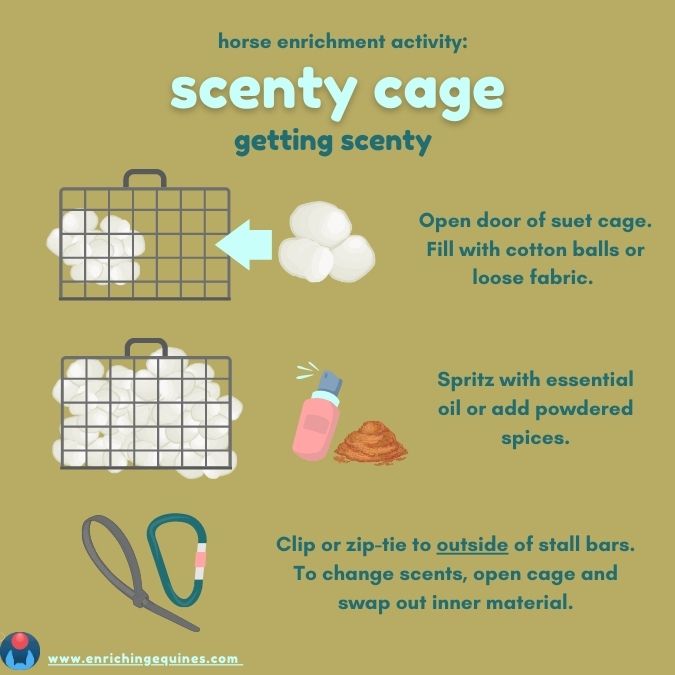
Step 1. Source a Suet Cage
A suet cage is designed to hold a cake of suet for feeding birds. It’s a rectangular, coated wire cage. One end or side of the cage opens so you can insert the suet – we’ll take advantage of this design to add scented material.
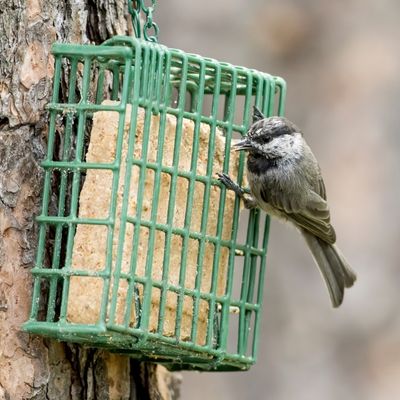
You can find a suet cage at most large stores with a garden aisle, or at your local garden and feed store. They’re also available from Amazon (this one is $7).
Step 2. Pick Your Filler Material
For this DIY horse enrichment project you’ll need some material to fill the suet cage. Fluffy, natural material like cotton or wool is best because they hold onto scents better than synthetic materials.
Plain white cotton balls, from the drugstore or beauty aisle, work great. They’re inexpensive and easy to add to the suet cage.
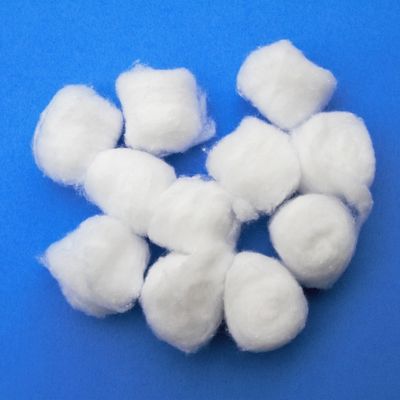
For a washable and reusable scent filler, you can use plain cotton washcloths or even scrap cotton or felt.
Step 3. Stuff the DIY Scent Cage
Open the suet feeder using its hinged side. It should open easily. Some models open by their bigger side, like this clamshell style:
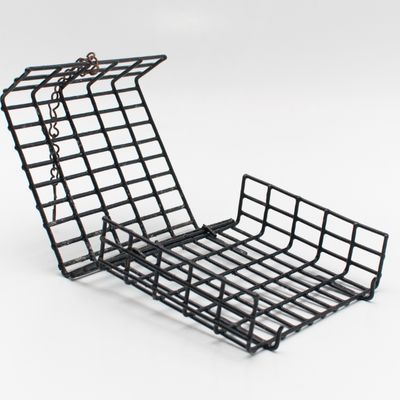
Others, like the one I used, open using the smaller end:
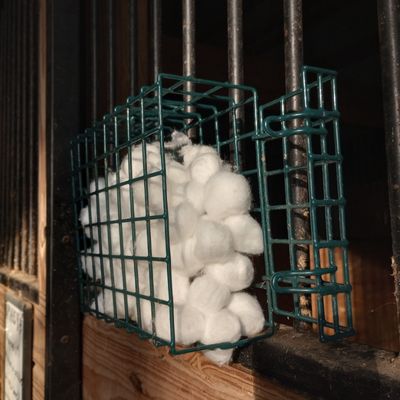
There’s no difference between the two for the purposes of this tutorial. Just open it up, stuff, and close the scent cage securely.
Step 4. Pick your Scents
Here’s the fun part: which scents will you use? This equine scent enrichment piece works with any scent. The options in this article on how to make a DIY scent board are a great place to start.
If you want a primer on scent enrichment in general, this article covers everything.
Because the cage is on the outside of your horse’s stall, you can use any variety of scented material. The horse can’t get to it, which puts solid options like flowers or pine boughs on the table. These items are wonderfully scented but might not be suitable for a horse to consume, so this no-snack scent enrichment is perfect for them.
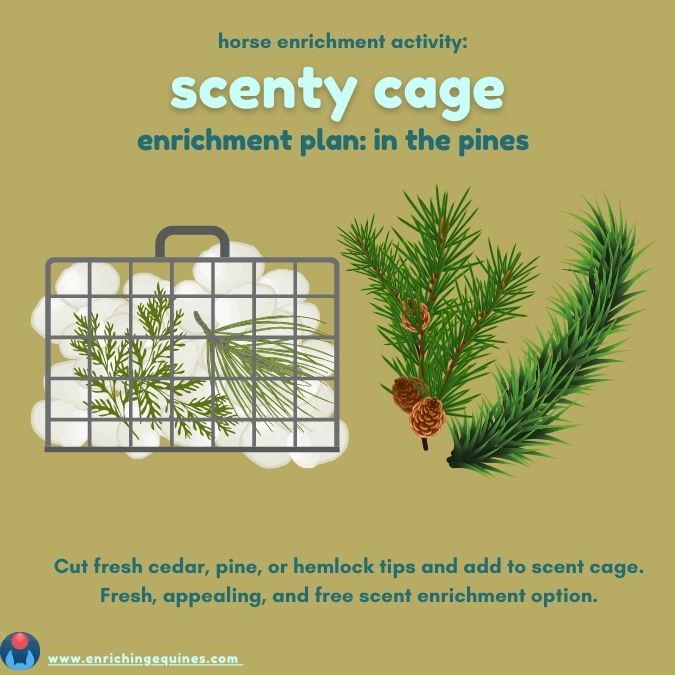
But fine textured or liquid scents are also a great choice. Essential oils make easy and versatile add ins for the scent cage. You can make the oil go farther by creating your own essential oil spritzer bottles, using this step by step tutorial.
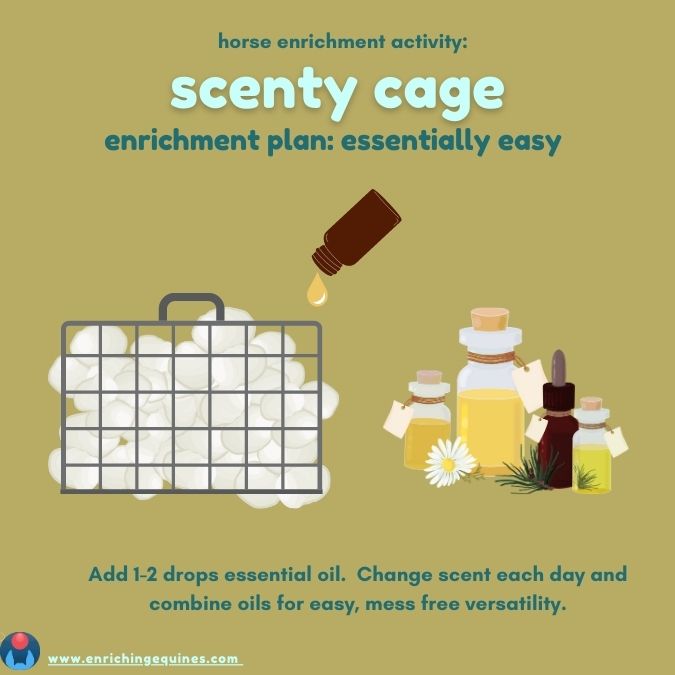
Baking extracts or powdered spices like cinnamon, allspice or nutmeg are also great choices.
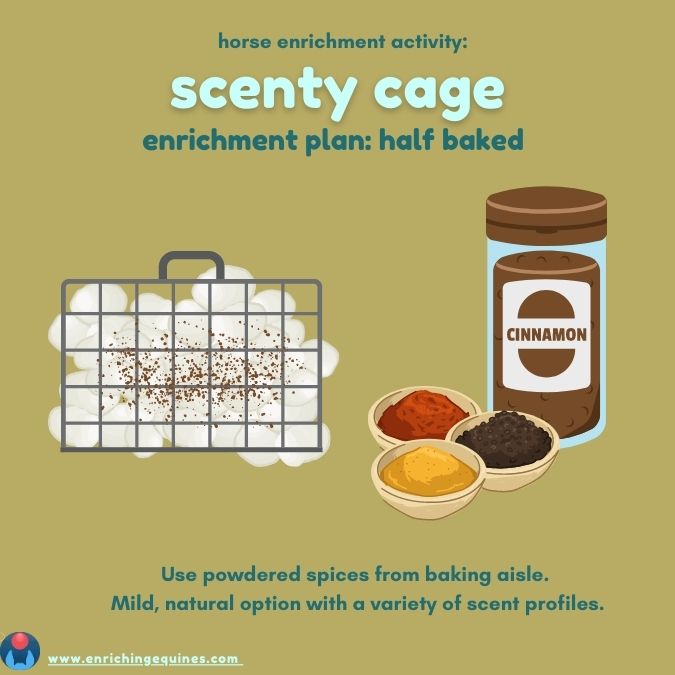
And lastly, don’t forget the smell of other animals! Your horse’s herdmates are a great choice for scenting this item – stall confinement usually makes it impossible for your horse to have close contact with their equine friends. This scent enrichment item won’t replace the real thing, but can give your horse the scents of their friends as a comfort and source of social enrichment during confinement.
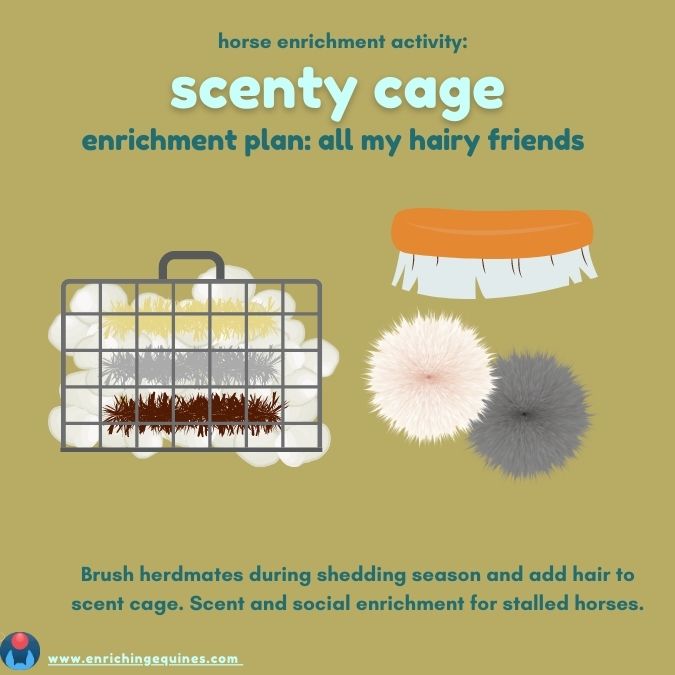
Attaching and Using your Scent Cage
It’s important to tie or clip the scent cage to the outside of your horse’s stall.
The cage is sturdy but may not be strong enough to stand up to pushing or biting. Most suet cages also have square, pointy corners, which are a risk to eyes if a horse accidentally ran into the item.
Most stalls have a front grille of bars or mesh. Attach the scent cage here, using zip ties or a pair of carabiner clips.
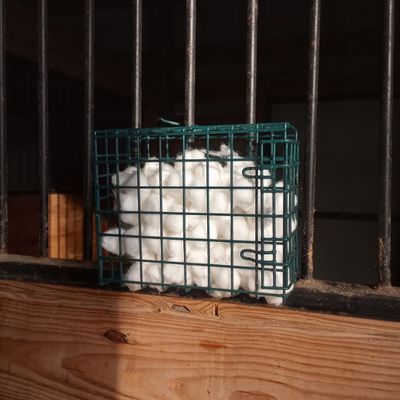
Attach the cage by its non-opening sides and not the “door,” so that you can open the cage easily to refill the scents.
You’ll want to change the scents out as frequently as you can spare the time. Daily is ideal, and is most important if your horse is confined 24/7. If your horse spends just a few hours a day in a stall, swapping out the scent is nice but won’t be a make-or-break element of boredom relief. Swap scents whenever you have a spare moment in the stable, and your horse will appreciate it.
Related Enrichment
This DIY project is a scent enrichment item. For more on scent enrichment for horses, try these articles:
DIY Texture + Scent Board Tutorial
For more sensory enrichment, check out these options for your horse’s other senses: